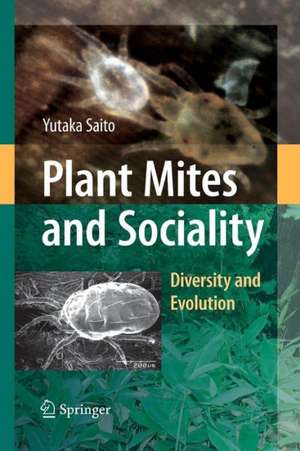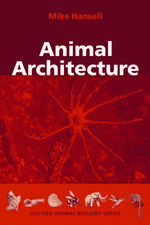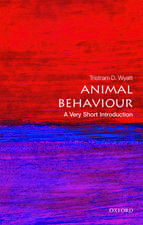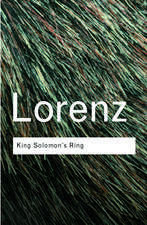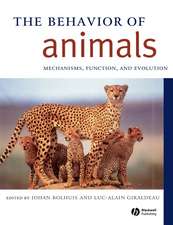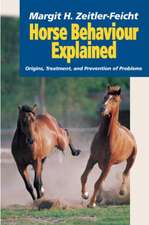Plant Mites and Sociality: Diversity and Evolution
Autor Yutaka Saitoen Limba Engleză Paperback – 10 noi 2014
| Toate formatele și edițiile | Preț | Express |
|---|---|---|
| Paperback (1) | 667.66 lei 38-44 zile | |
| Springer – 10 noi 2014 | 667.66 lei 38-44 zile | |
| Hardback (1) | 1109.16 lei 6-8 săpt. | |
| Springer – 16 dec 2009 | 1109.16 lei 6-8 săpt. |
Preț: 667.66 lei
Preț vechi: 867.10 lei
-23% Nou
Puncte Express: 1001
Preț estimativ în valută:
127.75€ • 133.39$ • 105.73£
127.75€ • 133.39$ • 105.73£
Carte tipărită la comandă
Livrare economică 01-07 aprilie
Preluare comenzi: 021 569.72.76
Specificații
ISBN-13: 9784431547464
ISBN-10: 4431547460
Pagini: 200
Ilustrații: IX, 187 p.
Dimensiuni: 155 x 235 x 11 mm
Greutate: 0.29 kg
Ediția:2010
Editura: Springer
Colecția Springer
Locul publicării:Tokyo, Japan
ISBN-10: 4431547460
Pagini: 200
Ilustrații: IX, 187 p.
Dimensiuni: 155 x 235 x 11 mm
Greutate: 0.29 kg
Ediția:2010
Editura: Springer
Colecția Springer
Locul publicării:Tokyo, Japan
Public țintă
Professional/practitionerDescriere
Mites are very small animals, characterized by wingless and eyeless bodies, in which sociality has been discovered. This book offers detailed descriptions of the diverse social systems and the social evolution of mites, ranging from genetic to ecological aspects. Through a broad spectrum of studies including traditional natural history, taxonomy, modern evolutionary and behavioral ecology, and theoretical models as well, the book addresses a number of important findings on plant mite evolution and species radiation, with the author succeeding in combining theoretical and practical approaches in behavioral ecology by proposing a new game theory. These findings reflect the complex evolutionary history of these taxa and also help to point out clearly what is known and what is not yet known to date. Mites have been considered a minor animal group, but the author shows that mites actually possess great diversity and therefore make unique materials for evolutionary and behavioral studies.
Cuprins
1 What Are Mites? 1.1 Brief Systematic Overview of Acari 1.2 Peculiarities of Mites for Ecological and Evolutionary Studies 2 Plant Mites 2.1 Spider Mites and Plants 2.2 Life History and Host Plants 2.3 Life Type Diversity in Spider Mites What Is a Life Type? Supposed Function of LW and CW Life Types 2.4 Diversity of Physiological Adaptation in Spider Mites Variation in Overwintering Stage Diapause 2.5 Diversity of Plant Mites Other Than Spider Mites Phytoseiids Predators Other Than Phytoseiids 3 Diverse Microcosmos on Sasa 3.1 Diversity in Sasa-Inhabiting Mites 3.2 Is the Flattened Body an Antipredator Strategy? 3.3 Do Oviposition and Undergoing Quiescence on Tips of LeafHairs Constitute Antipredatory Behaviors? 3.4 Do Compartment-Type Nests Have Antipredator Functions? 3.5 Woven Nests of Stigmaeopsis What Is Stigmaeopsis? Is Nest Size Variation a Refl ection of Antipredator Strategy? Advantages of Small Nests Additional Advantages of Small Nests Why Are There Large Nest Builders? Disruptive Selection on Nest Size?A Further Question 3.6 Explanation of Diversity in Life Type and Life History Variation on Sasa 3.7 Other Variation in Spider Mites on Sasa 4 Mite Sociality 4.1 Diversity in Genetic System 4.2 Sexual Behavior 4.3 Sex Ratio 4.4 Sociality in Stigmaeopsis 4.5 Sociality in Spider Mites 4.6 Overview of Mite Sociality 4.7 Background of Social Evolution in Mites 5 Inbreeding Depression in Haplo-diploidy 6 Kin Selection 6.1 Variation in Male Aggressiveness Between Species 6.2 Variation in Male Aggressiveness Within a Species 6.3 Egoism and Cooperation 6.4 Two Groups Showing Different Levels of Male Aggressiveness Why Are There Two Groups Showing Different Clinal Trends? 6.5 Sexual Selection 6.6 Theoretical Explanation of Male Aggression and Cooperation Absolute Conditions for Cooperation Mixed Strategy of Aggression and Cooperation Fitting Practical Data to the Model Thought Exercise 7 Is Basic Science the Father of Applied Science? 7.1 What Has Happened in Chinese Bamboo Forests? Plausible Factors for Pest Outbreaks Approaching a Factor 7.2 Simulation of One-Predator?Two-Prey Systems 7.3 Epilogue: Japanese Sato-yama 8 Further Research for Mite Behavioral and Evolutionary Ecology AfterwordAppendices Appendix 1. Brief History of Reinstatement of Stigmaeopsis Appendix 2. Model of Repeated Blind Sampling Appendix 3. Calculation of Practical Parameters in Game Model References Index
Recenzii
From the reviews:
“Saito’s book should be of appeal to students learning about and researchers working on animal behavior and behavioral ecology, especially those interested in the evolution of cooperative behaviors and social organization. It may also be of interest to researchers working in pest management … . Saito’s book gives a fascinating glimpse of how wonderful the life of mites can be and should stimulate many of its readers to focus in their research on mites and pick up and dive into topics related to behavioral ecology.” (Peter Schausberger, Experimental and Applied Acarology, Vol. 52, October, 2010)
“Saito’s book should be of appeal to students learning about and researchers working on animal behavior and behavioral ecology, especially those interested in the evolution of cooperative behaviors and social organization. It may also be of interest to researchers working in pest management … . Saito’s book gives a fascinating glimpse of how wonderful the life of mites can be and should stimulate many of its readers to focus in their research on mites and pick up and dive into topics related to behavioral ecology.” (Peter Schausberger, Experimental and Applied Acarology, Vol. 52, October, 2010)
